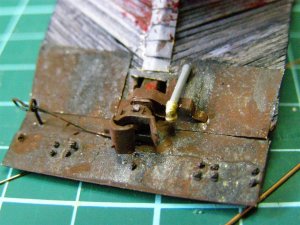Rotorranch
MRR Refugee
I am trying to get my head around weathering.
All my life, I have been around cars and racing. I've always tried to make stuff pretty and shiny. Dirty, nasty and rusty weren't an option!
Lately, I've decided my trains were too pretty. So I've been trying my hand at some light weathering. I've seen some of the stuff some of you guys and gals do, and it looks so much more real.
I've been trying some things on some scenic parts, structures and cheapie rolling stock I have, but I'm still not real happy with the results yet.
I really don't want to screw up any of my nice and/or expensive stuff while learning!
I'll be posting some pics of some of the stuff I've done so far. I'm hoping to garner some construcive criticism and suggestions on how to improve my techniques.
First off is some Woodlands Scenic "Junk".




Rotor
All my life, I have been around cars and racing. I've always tried to make stuff pretty and shiny. Dirty, nasty and rusty weren't an option!
Lately, I've decided my trains were too pretty. So I've been trying my hand at some light weathering. I've seen some of the stuff some of you guys and gals do, and it looks so much more real.
I've been trying some things on some scenic parts, structures and cheapie rolling stock I have, but I'm still not real happy with the results yet.
I really don't want to screw up any of my nice and/or expensive stuff while learning!
I'll be posting some pics of some of the stuff I've done so far. I'm hoping to garner some construcive criticism and suggestions on how to improve my techniques.
First off is some Woodlands Scenic "Junk".
Rotor
Last edited by a moderator:


